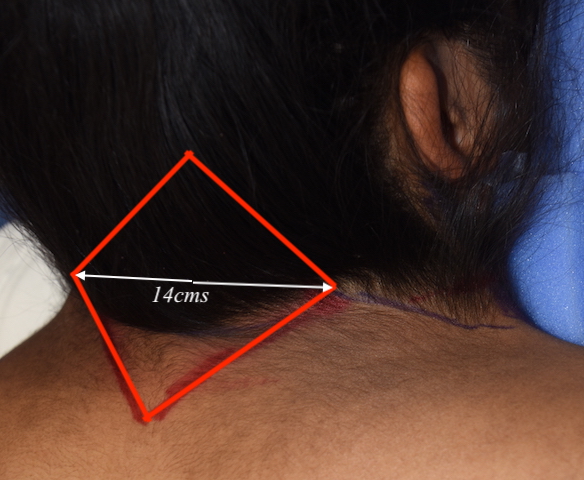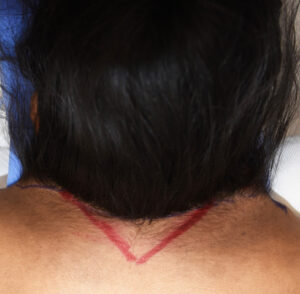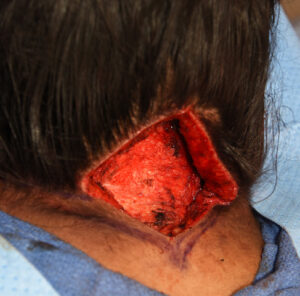Background: The webbed neck is a unique feature of certain genetic disorders. In its fullest expression prominent skin bands exist along the side of the neck with an associated low hairline. A line of hair can be seen to go along the webs at various distances down them. In lesser expressions of neck webbing, usually seen in mosaic patients, more moderate webs exist without hair that runs down along them.
The webbed neck deformity is one of the most challenging of all neck contouring procedures. Unlike almost all other neck contour issues which are anteriorly based below the jawline, the webbed neck occurs on the side of the neck. This location offers no camouflage from either the deformity or any direct type of repair for it.
The webbed neck has been treated by a variety of approaches. The historic technique is a direct one using a line of z-plasties along the webs. While effective this leaves very visible scars on both sides of the neck. More contemporary approaches us a posterior neck technique with variable geometric shapes of excision whose closure pulls the webbing inward decreasing their prominence. This places the scar line in a much more hidden location.
Case Study: This female had very prominent neck webs with a profuse hair density and very low hairline. A line of hair went down along the entire length of the webs. She also had short neck and wide trapezius muscles.

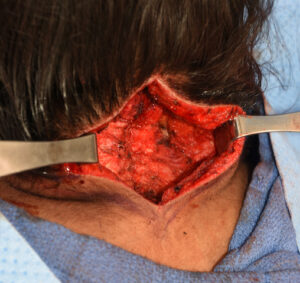
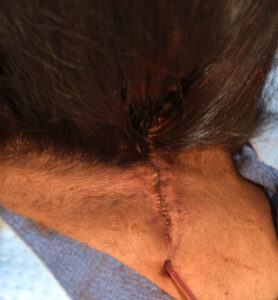
The posterior diamond excision to the webbed neck produces maximal inward pull at the most flexible part of the web. It keeps the scar at the most inconspicuous location particularly in longer hairstyles. Such a scar location also provides the opportunity for a secondary procedure if additional web correction is desired.
Case Highlights:
1) Webbed neck deformities are typified by a wide neck due to skin bands that exceed the lateral border of the trapezius muscle.
2) A hidden scar approach to webbed neck improvement employs a posterior neck midline excision with fascial flap plication.
3) Complete webbed neck removal is usually not obtained but substantial improvement in its appearance is.
Dr. Barry Eppley
Indianapolis, Indiana

